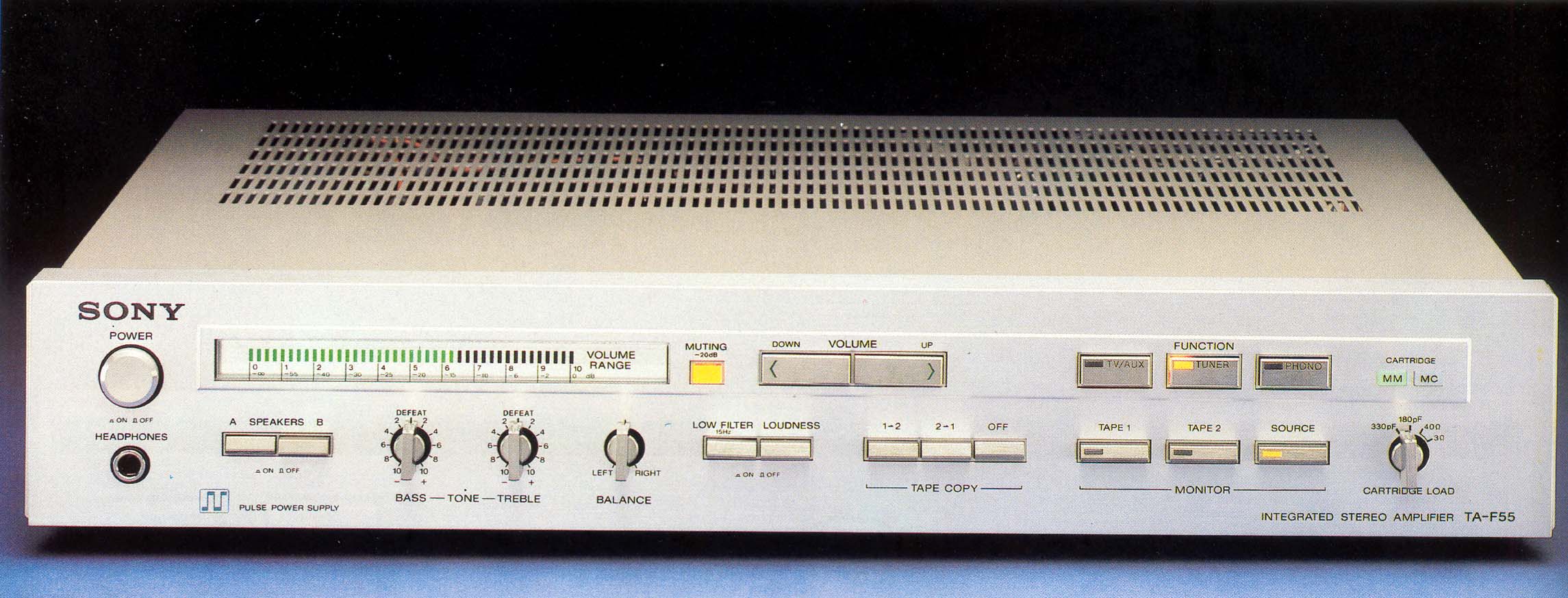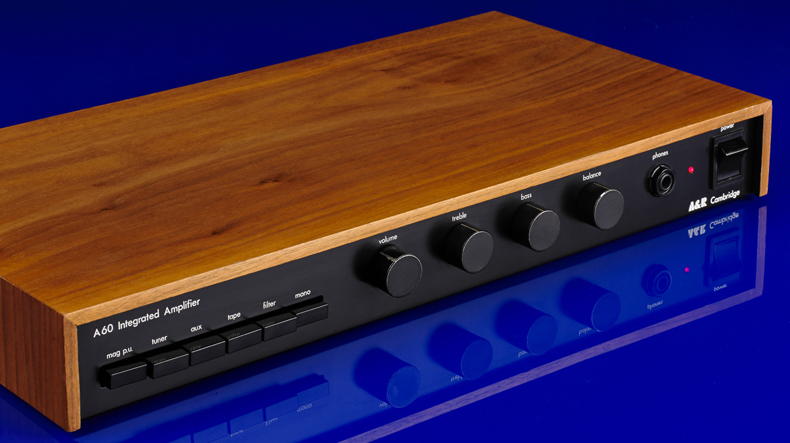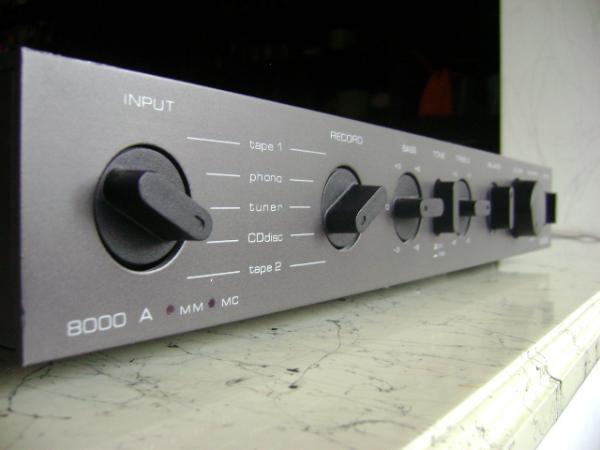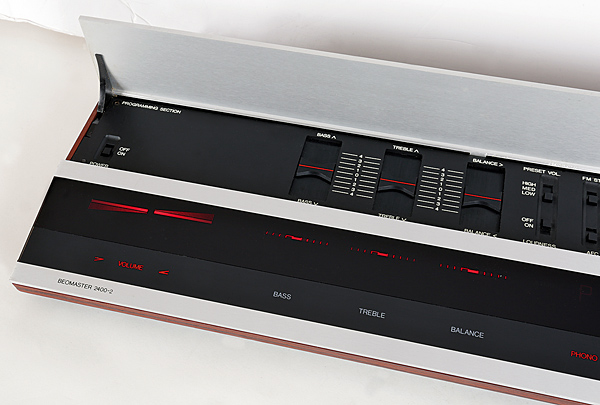Sony amplifiers had abandoned their unique but unstable V-FET output transistors by 1979, and were inventing in new ways – the goal was to bring an interesting twist to a standard design. As a result, Sony engineers placed the power transistors on the main circuit board from the center of the new TA-F range upwards in order to achieve ultra-short signal routes. Normally, this would cause the board to melt, so competing manufacturers would never consider it — but Sony had other ideas. It devised a new ‘heat pipe’ filled with freon gas that transported heat away from the amplifier’s power transistors to several thin cooling fins. It was outlandish stuff, even by the norms of the day.
This was standard on every high-end Sony integrated amplifier, and it was a brilliant idea. From a marketing standpoint, it provided the manufacturer something to speak about in the brochure, as well as something to write about in the hi-fi magazines of the time. A Sony salesperson might reply, “Well, the Hitachi may have MOSFETs, but the Sony is freon-cooled!” in a world where “high tech” was king. However, it also worked on two other levels: first, by combining it with a new form of power supply, Sony was able to pack a lot of circuitry into a small space, which is why the TA-F55 is so small. Second, the sound was significantly improved by the super-short signal path. The internal wiring was 99.99 percent pure copper, and the preamplifier stages were separated from the main amplifier section by a FET buffer stage. Electronic switches were used to select the source. It was a marvel of compactness and elegance on the inside.
The 430x80x320mm TA-F55 was extremely thin and light in 1979, weighing only 4.6kg. To be sure, most Japanese amplifiers of the time were plug-ugly and thick, standing at least twice as tall as this one. The excellent packing was due not only to the revolutionary cooling method, but also to the fact that this amplifier used a Pulse Power Supply, eliminating the need for a hefty frame-type transformer. The line voltage was rectified, chopped at 20kHz, inverted, and then rectified and filtered again. Given the little space it had to work in, the outcome was unusually clean DC power. At the same time, the power supply allowed for the parallel operation of a string of high bandwidth ‘High Ft’ power transistors, which resulted in good measured performance. Despite this, only a small proportion of negative feedback was used.
The TA-F55 was effectively designed from the inside out, unlike many generic Japanese integrated amplifiers of the time. It was both compact and slender, but it didn’t come with any of the compromises that such a small and slimline amplifier would generally involve. It wasn’t just a matter of cramming as much conventional technology into the box as possible; it was also a matter of employing unorthodox engineering techniques to attain the sound quality of a full-sized, high-priced amplifier. All of this was intelligent, but the business felt that an amplifier that cost nearly as much as a Linn Sondek turntable at the time should have a sophisticated control structure. Sony chose an electronically controlled two-speed push-button volume control with a green lit linear display, maybe in response to the desire for new ways of doing things and perhaps with one eye on an increasingly sophisticated Bang & Olufsen.
The TA-F55 produced good measured performance, claiming 70W RMS per channel into 8 ohms, which was a lot of power for a full-sized high-end amplifier at the time, let alone a half-height one. It had a damping factor of 50 and a THD of only 0.08 percent, according to the manufacturer. Moving coil and moving magnet phono inputs with sensitivities of 0.25mV and 2.5mV, respectively, and two-step capacitance and impedance switching through small front panel selectors were available on the amplifier. Tuner, auxiliary, and twin tape monitor circuits were also included. In true Sony fashion, bass and treble controls were installed, with 10dB of boost or cut at 100Hz and 5kHz. There was also a -20dB muting switch and two sets of speaker outputs, which unfortunately only accept very thin bare wire connections.
There was an unwritten rule in Japanese hi-fi towards the end of the 1970s. Most of it had all kinds of ostensibly special technologies with names concocted by marketing departments – frequently to solve a problem that didn’t exist – but it still sounded bad. Most integrated models from the country, for example, were greatly surpassed by the very traditional British A&R Cambridge (Arcam) A60 of the time. So many seasoned hi-fi tinkerers – and even customers – regarded the hype with a grain of salt. However, once you heard the TA-F55, you couldn’t help but notice that it was actually quite good.
It was surprising to hear the Sony come out on top in a direct A-B comparison with the aforementioned quintessential British mid-price amplifier, the A&R A60. The TA-F55 sounded Japanese, while the A60 sounded British; the latter was warmer, smoother, and a little less forward. The Sony, on the other hand, was far more sophisticated and civilized than we’d come to anticipate from Japanese designers, and it even had its own unique sound: smooth, open, and delicate. Harshness or haze are typical of 1970s Japanese amplifiers, but this one lacked both. It was replaced with a sound that was startlingly huge and authoritative, with a sense of immense unflappability and power reserves. It was both intricate and rhythmically propulsive at the same time. In short, the Sony sounded significantly ‘larger’ than it seemed, producing a sound that was almost high-end despite its small size.
In terms of absolutes, there’s a somewhat tinselly treble and a stiff and tight yet slightly light low bass, but aside from that, it’s difficult to find fault. The high bass is quite powerful and energizing. The midband is more three-dimensional than you’d expect from a Japanese amplifier of this age, but it still lacks depth perspective in absolute terms. The amplifier also broadcasts stereo pictures far left and far right, resulting in a significantly more commanding and all-encompassing soundstage than the aforementioned A&R.
Indeed, the TA-F55 may be described as a small Japanese superhero, capable of far more harm to its foes than they ever imagined and highly adept in what it can do, albeit limited by its size. It also has a mischievous personality — the music is lighthearted and romps about, supported by a solid, confident bass that never seems to run out of steam. The sound difference between it and the A&R A60 is irritating, because if only one of them sounded a little more like the other, you’d have a fantastic musical performance. If you pair the Sony with sweet, warm sources (a British belt-drive turntable from the era, for example), you’ll be in heaven.
Things were changing quickly when Sony discontinued the TA-F55 in 1982. The Japanese Yen had strengthened significantly against the US Dollar and the British Pound, prompting all Japanese industries to begin cost-cutting in order to compete on price. As a result, the next generation of Sony integrated amplifiers may have looked comparable, but they were less intriguing and lacked the sound quality of the TA-F55 and its peers. This was a very unique tiny amplifier, one that was very much of its period and would never be duplicated. It’s very unknown in the grand scheme of classic hi-fi, so when it does surface up secondhand, prices aren’t prohibitively exorbitant – expect to pay no more than £200 for a good specimen. Although it isn’t the best amplifier ever made, it is evocative of its era – which has long ago past.







